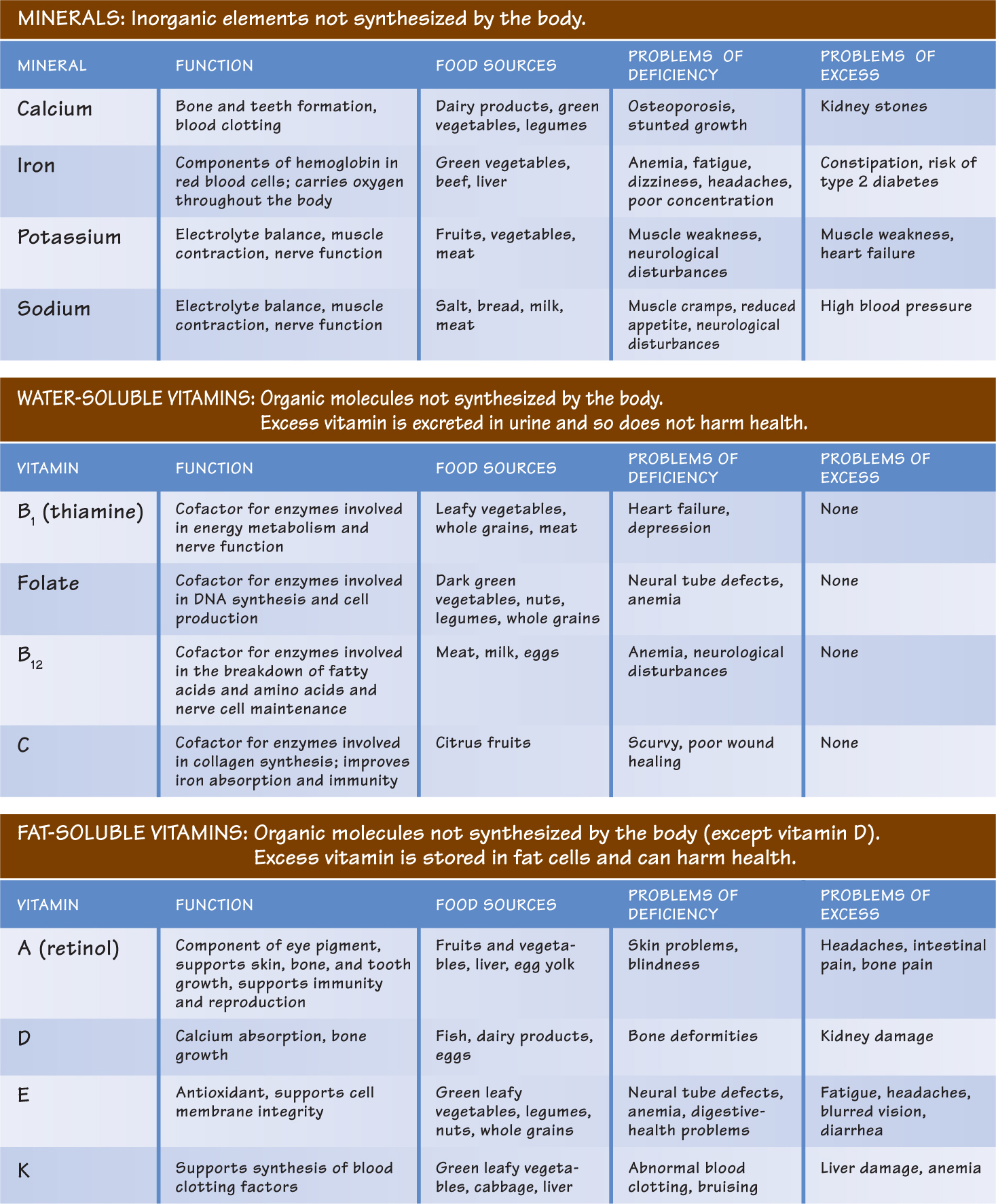HIDDEN HUNGER
When Manary first arrived at the Malawi hospital in 1994, he made a few changes to the then-standard treatment regimen of fortified milk. One thing he did right away was to add extra potassium to the milk that kids were drinking. Immediately, the fatality rates dropped—from 33% to 10%. Potassium, required for proper muscle contraction and nerve function, is one of many minerals that we need to keep healthy.
Because most minerals are needed only in small amounts, they are known as micronutrients (as opposed to macronutrients, which are needed in much larger quantities). Vitamins are another kind of micronutrient. Just because our bodies require only small amounts of micronutrients, however, doesn't mean they aren't important. In fact, micronutrient deficiency can have serious health consequences. Iron deficiency causes the blood disease known as anemia, for example, and lack of vitamin C causes a tissue-deteriorating disease called scurvy. (To prevent scurvy while on long sea voyages, British sailors would eat limes and other citrus fruit, which are high in vitamin C; this is why British people are sometimes called “limeys.”)
In Malawi, as in many parts of the developing world, people often suffer deficiencies of vitamin A and zinc—which can cause vision and immune problems. Such micronutrient deficiencies are sometimes known as “hidden hunger,” because the problem is not lack of food but a lack of necessary micronutrients. Manary says the problem is widespread because most of the world's staple crops—foods like rice, corn, wheat, and cassava—do not contain adequate micronutrients.
Food producers routinely add to foods some micronutrients that are hard to obtain from natural sources. Iodine, for example, is added to table salt (in “iodized” salt) to prevent goiter, an abnormal thickening of the neck caused by an enlarged thyroid gland due to a lack of dietary iodine.
The peanut butter RUTF that Manary uses contains a mineral and vitamin mix that is 1.6% of the paste by weight. Although peanut butter naturally contains many micronutrients, the amounts malnourished children need are greater than what is normally found in most foods. So the peanut paste is deliberately enriched with micronutrients (TABLE 4.1) .

Vitamins and minerals play numerous roles in the body. Some play structural roles—the mineral calcium, for example, is a primary component of bones and teeth. Others play a functional role, helping other molecules to act. Perhaps their most critical role is serving as cofactors for enzymes.
Cofactors are accessory or “helper” chemicals that enable enzymes to function. Cofactors include inorganic metals such as zinc, copper, and iron. Cofactors can also be organic molecules, in which case they are called coenzymes. Most vitamins are important coenzymes. Without cofactors and coenzymes that bind to enzymes and enable them bind to substrates, cell metabolism would grind to a halt (INFOGRAPHIC 4.6).
By adding extra vitamins and minerals to the milk that children were receiving in the hospital, Manary found that he could get the death rate to go way down, but the recovery rate still wouldn't budge. That's when he knew it was time for a new approach.

